Fulfillment

Fulfillment
Oil and acrylic on canvas
101 × 50 inches
2021
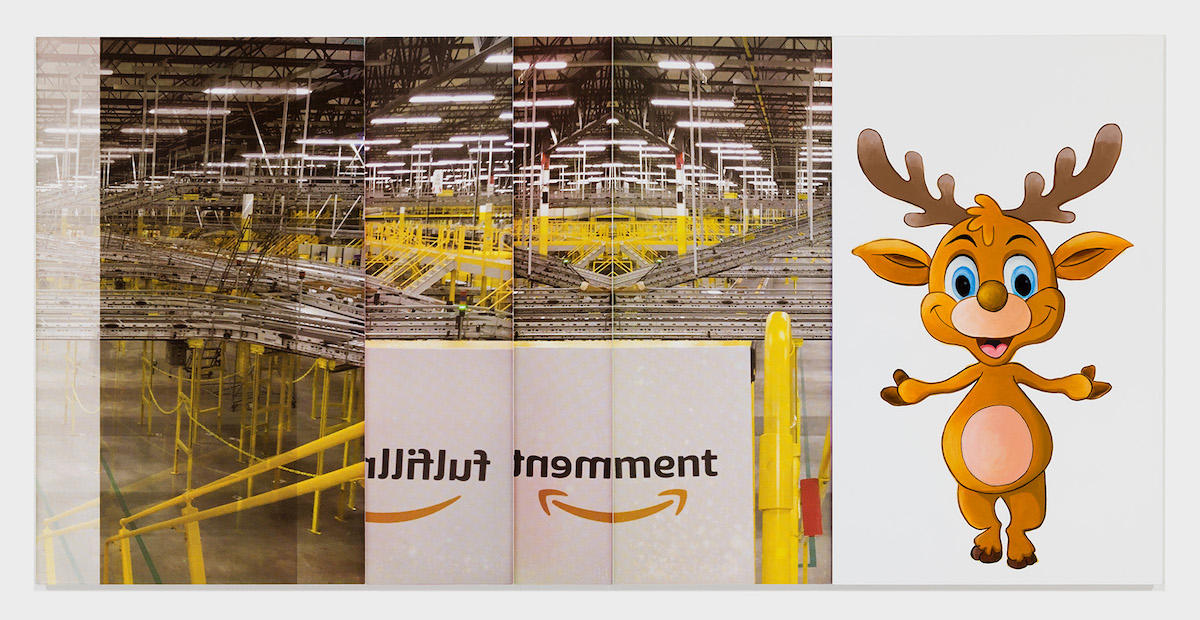
Dream
Oil and acrylic on canvas
50 × 103 inches
2021
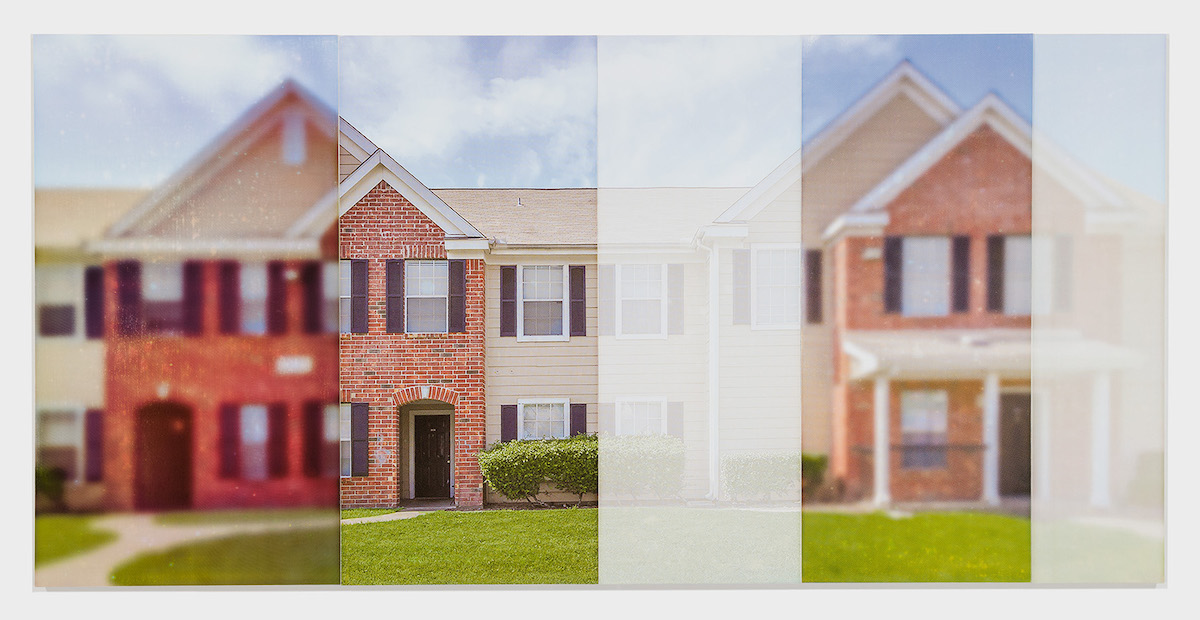
Duck
Oil and acrylic on canvas
50 × 123 inches
2021
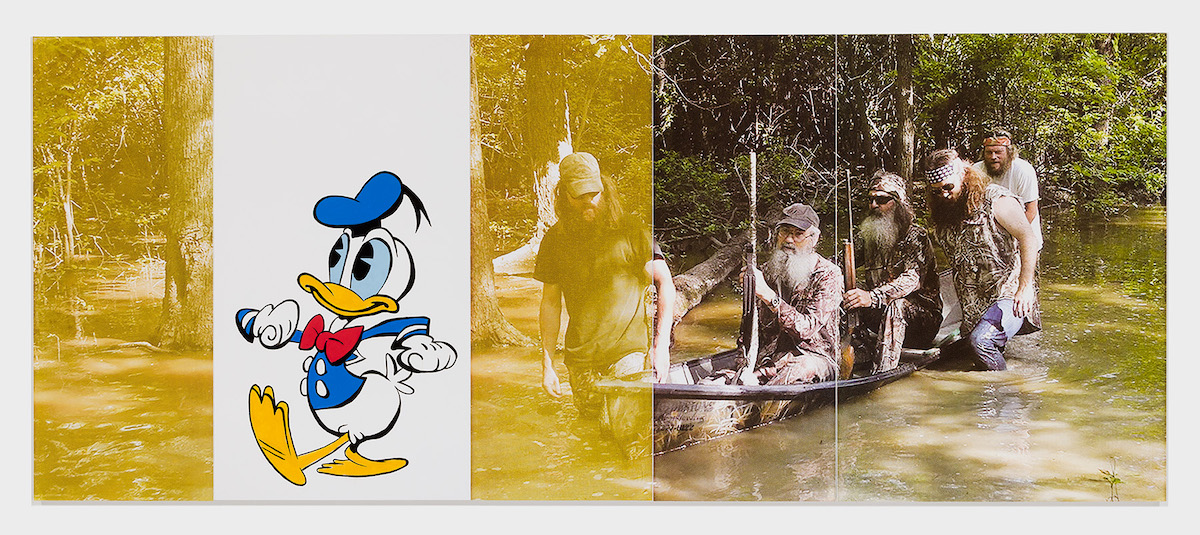
Hello
Oil and acrylic on canvas
50 × 99 inches
2021
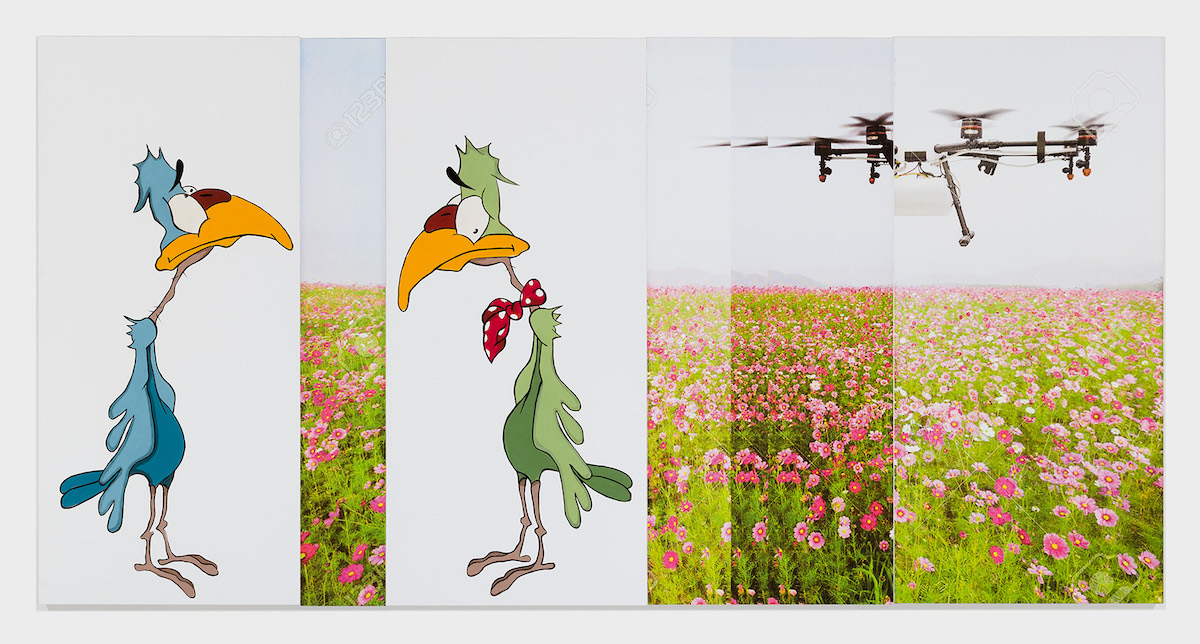
Lorem Ipsum
Oil and acrylic on canvas
50 × 131 inches
2021
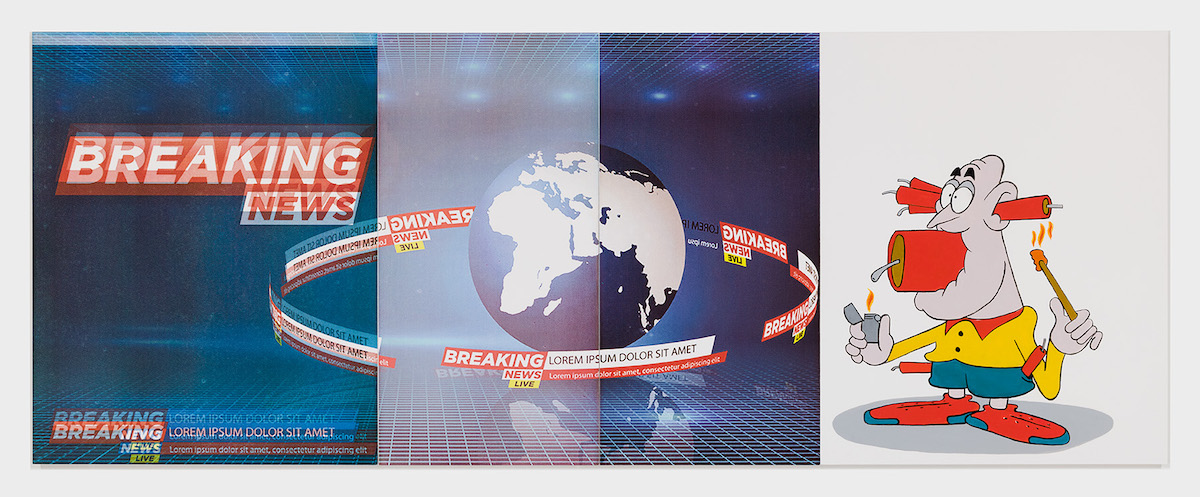
Split
Oil and acrylic on canvas
50 × 123 inches
2021
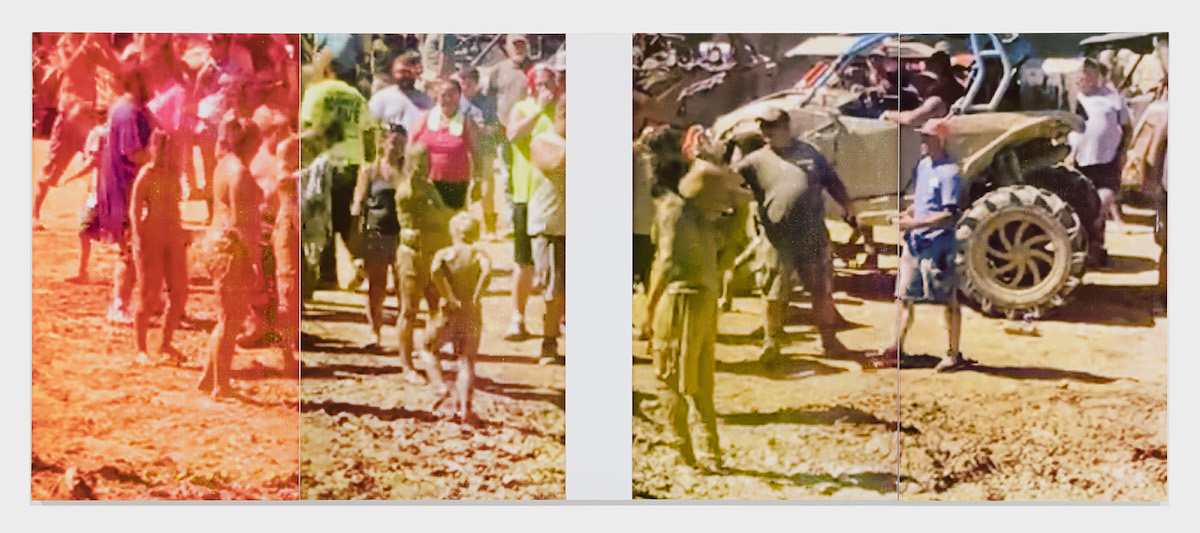
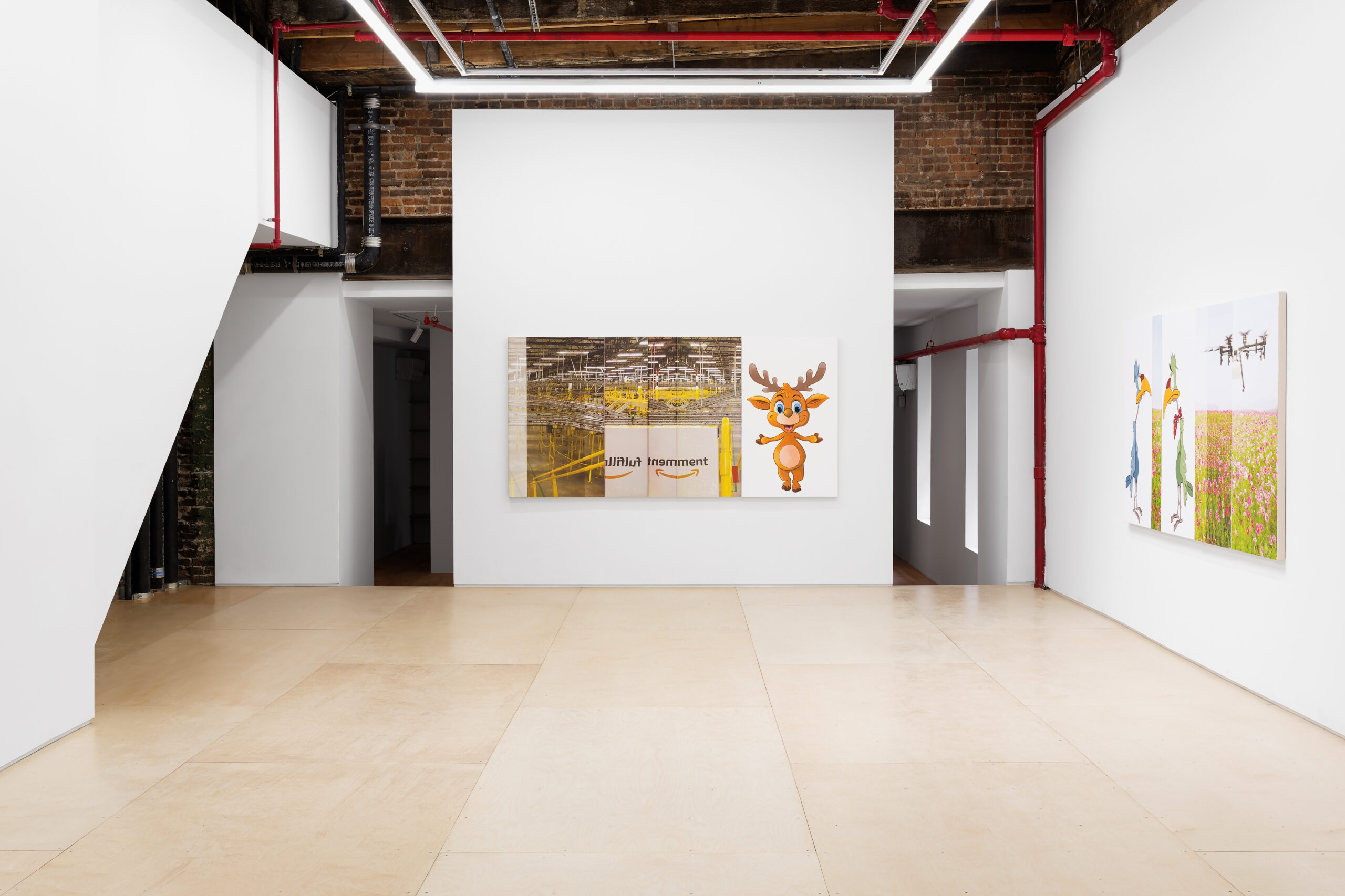
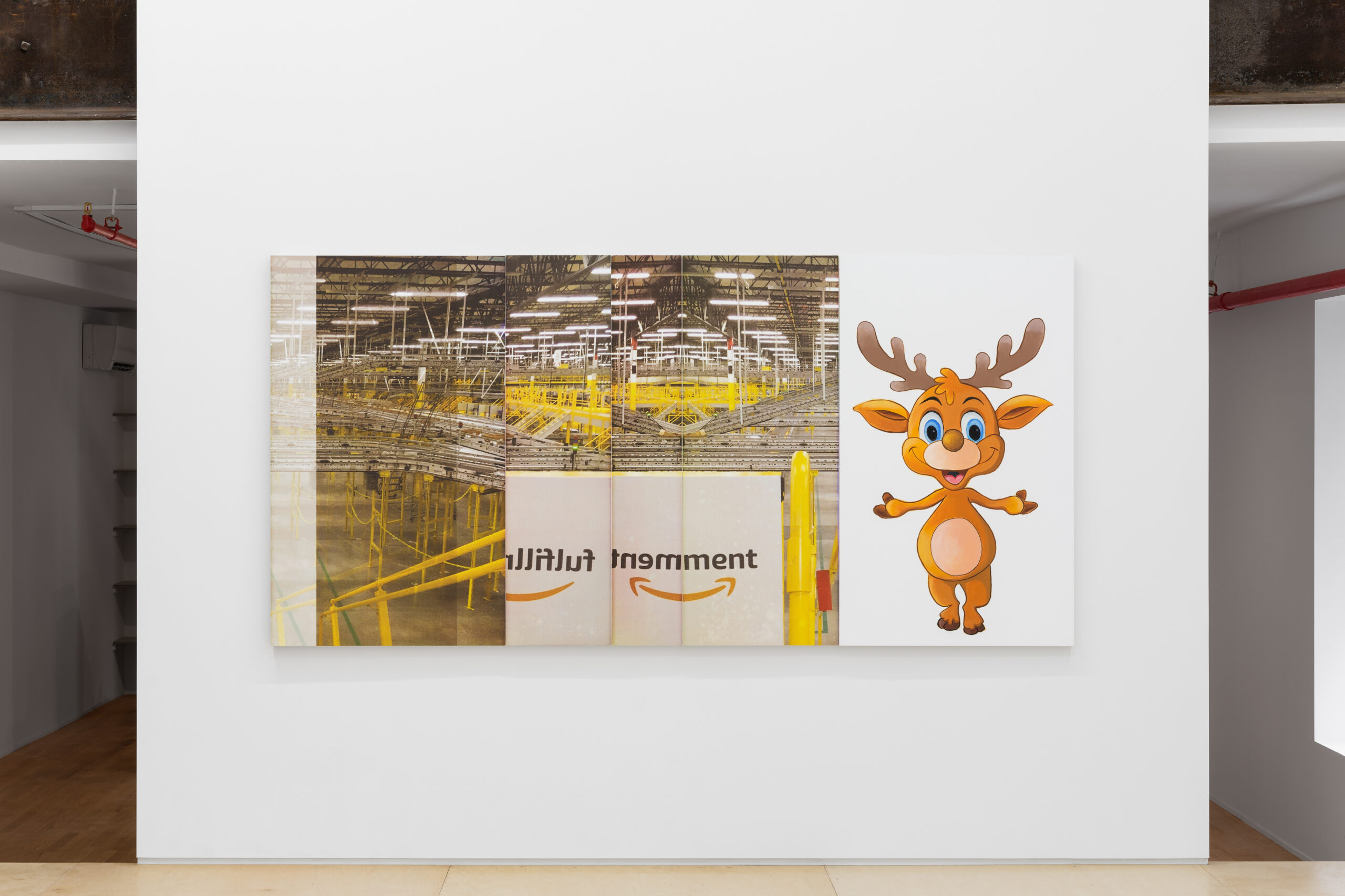


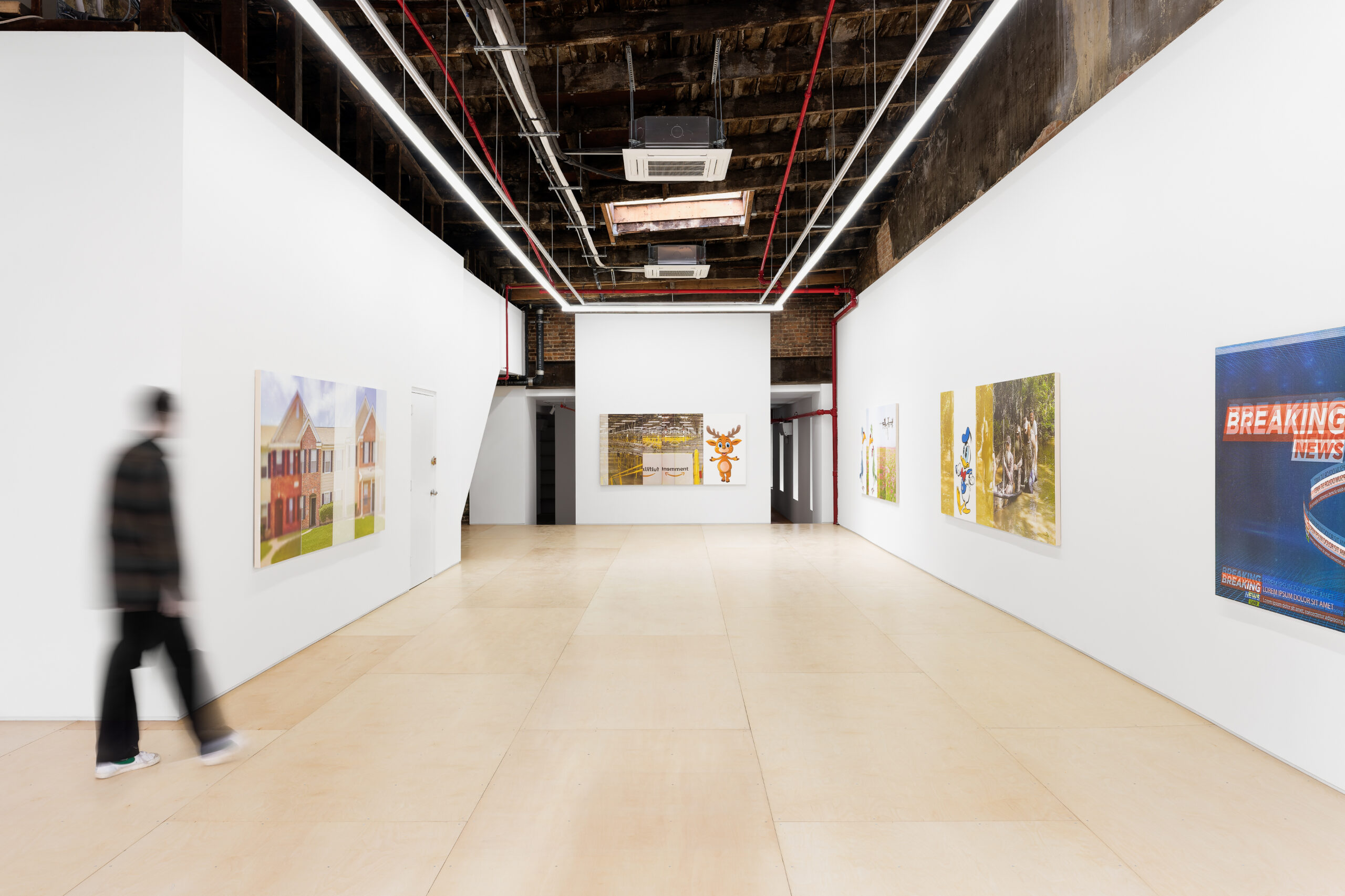

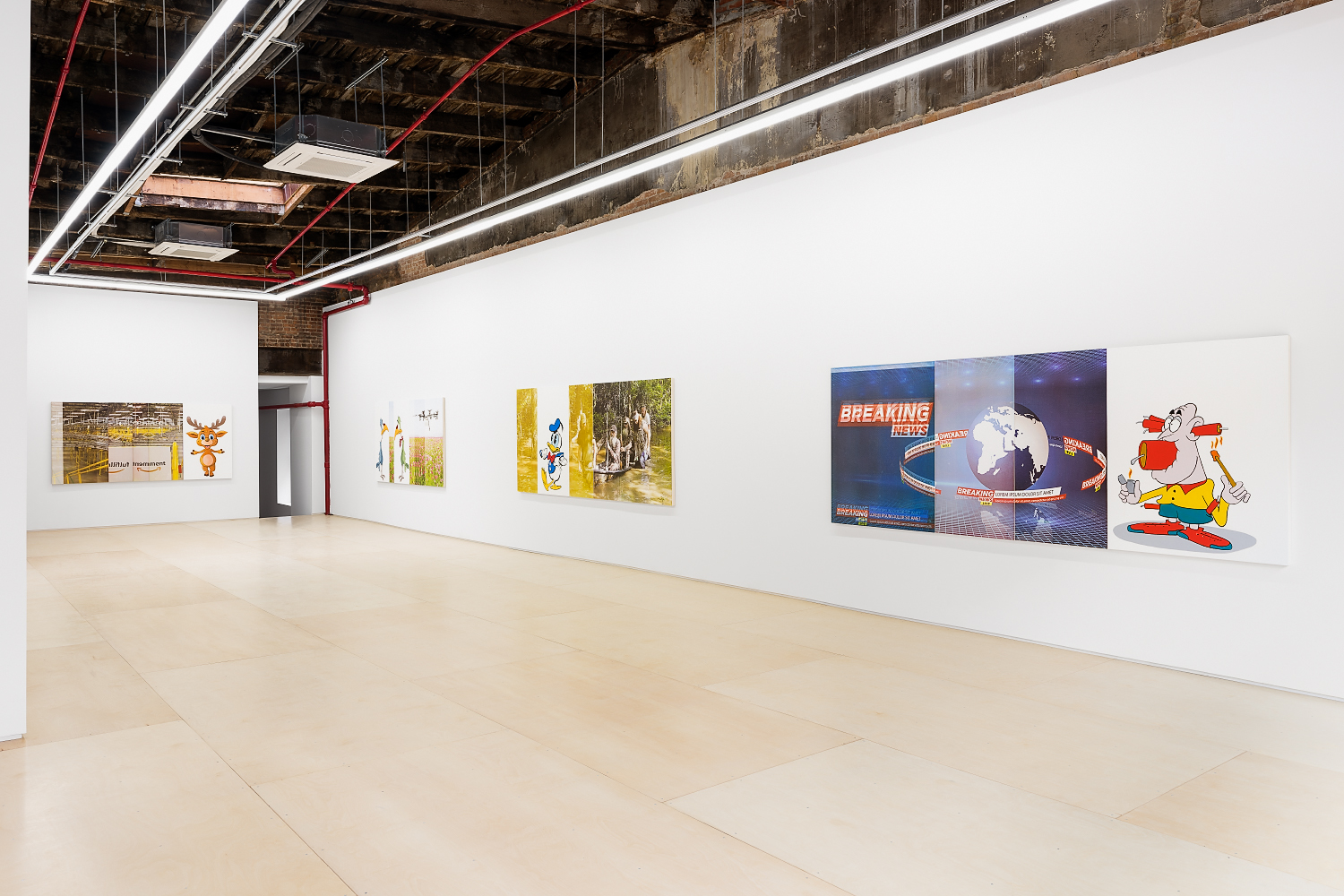
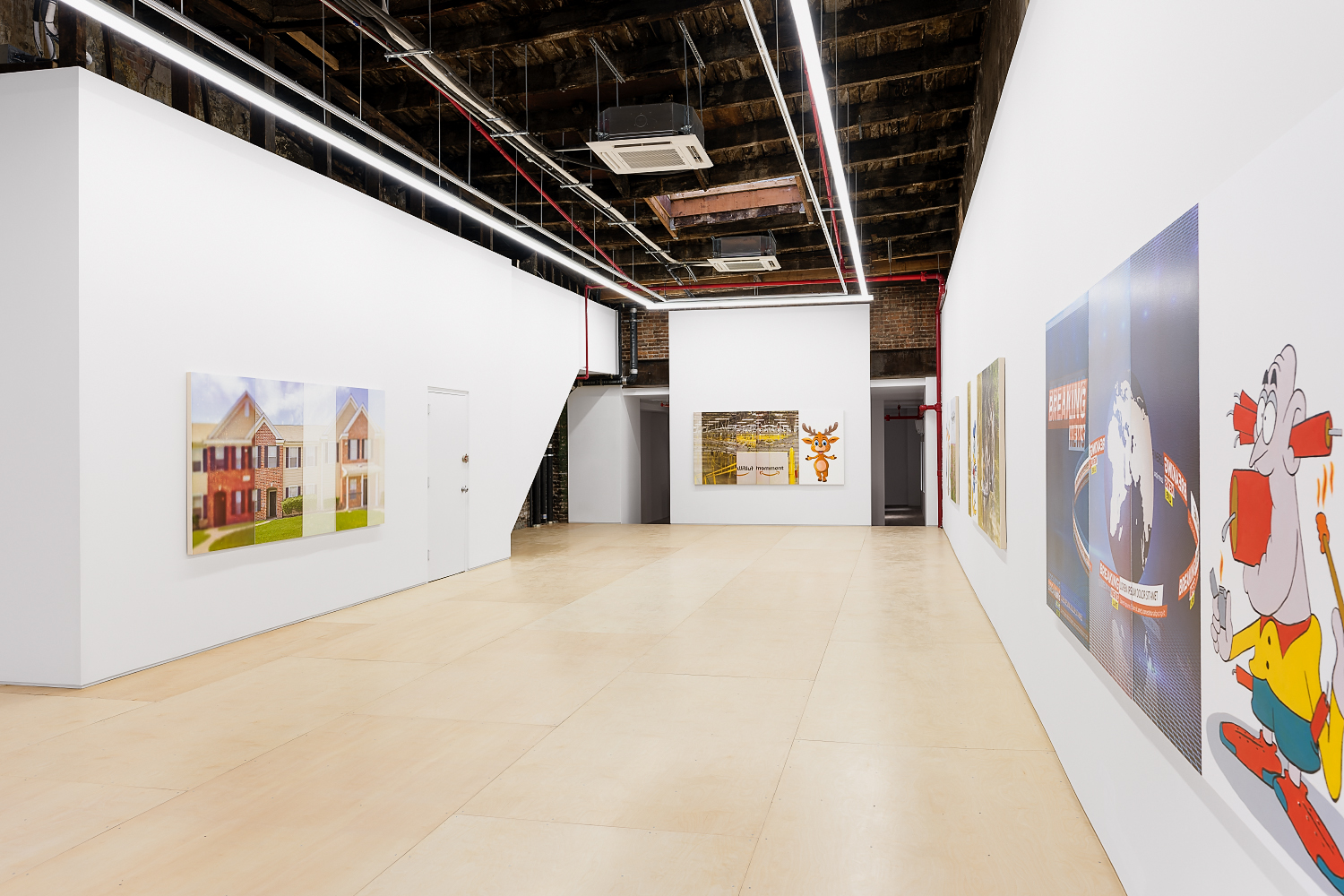
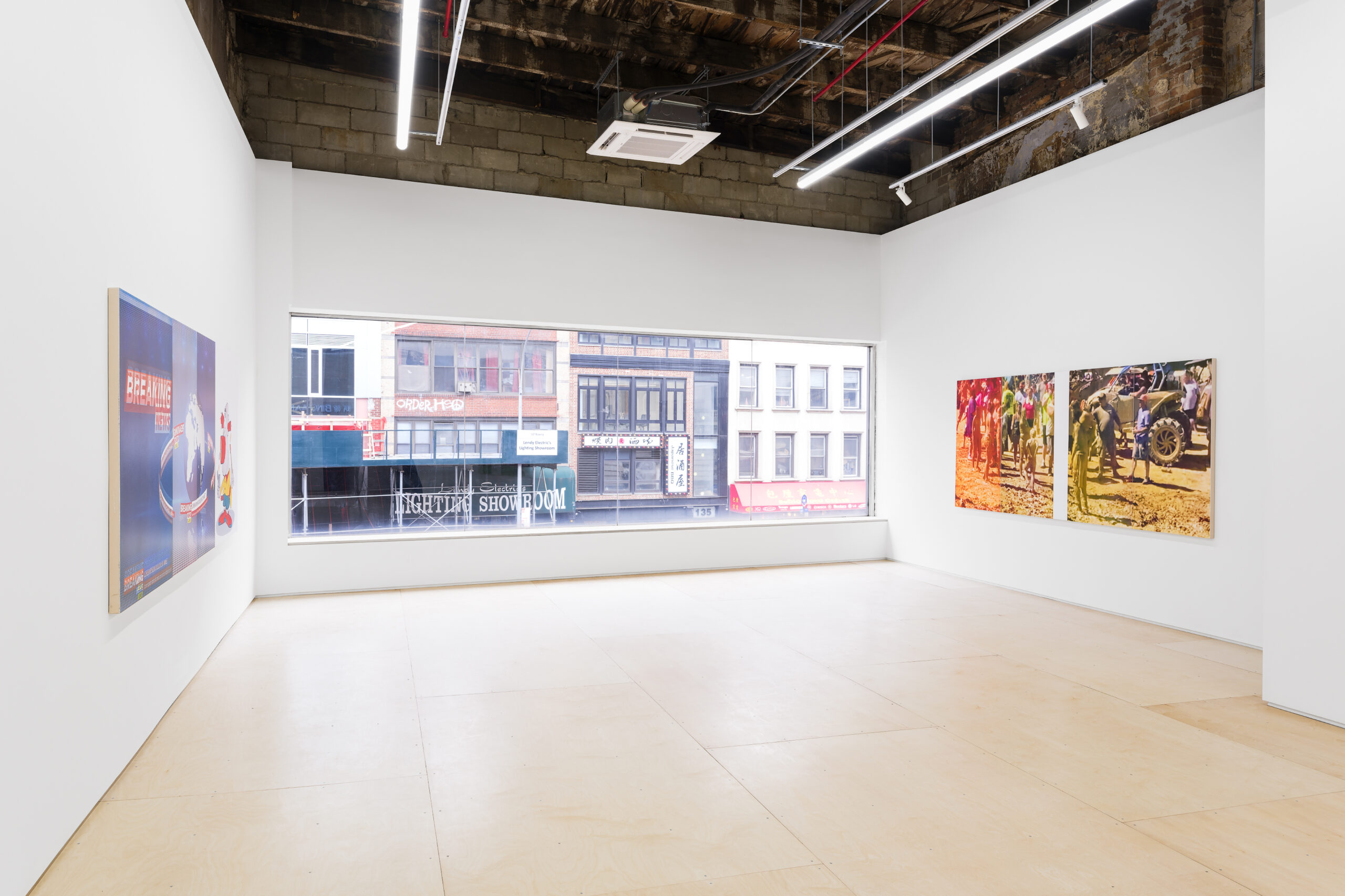

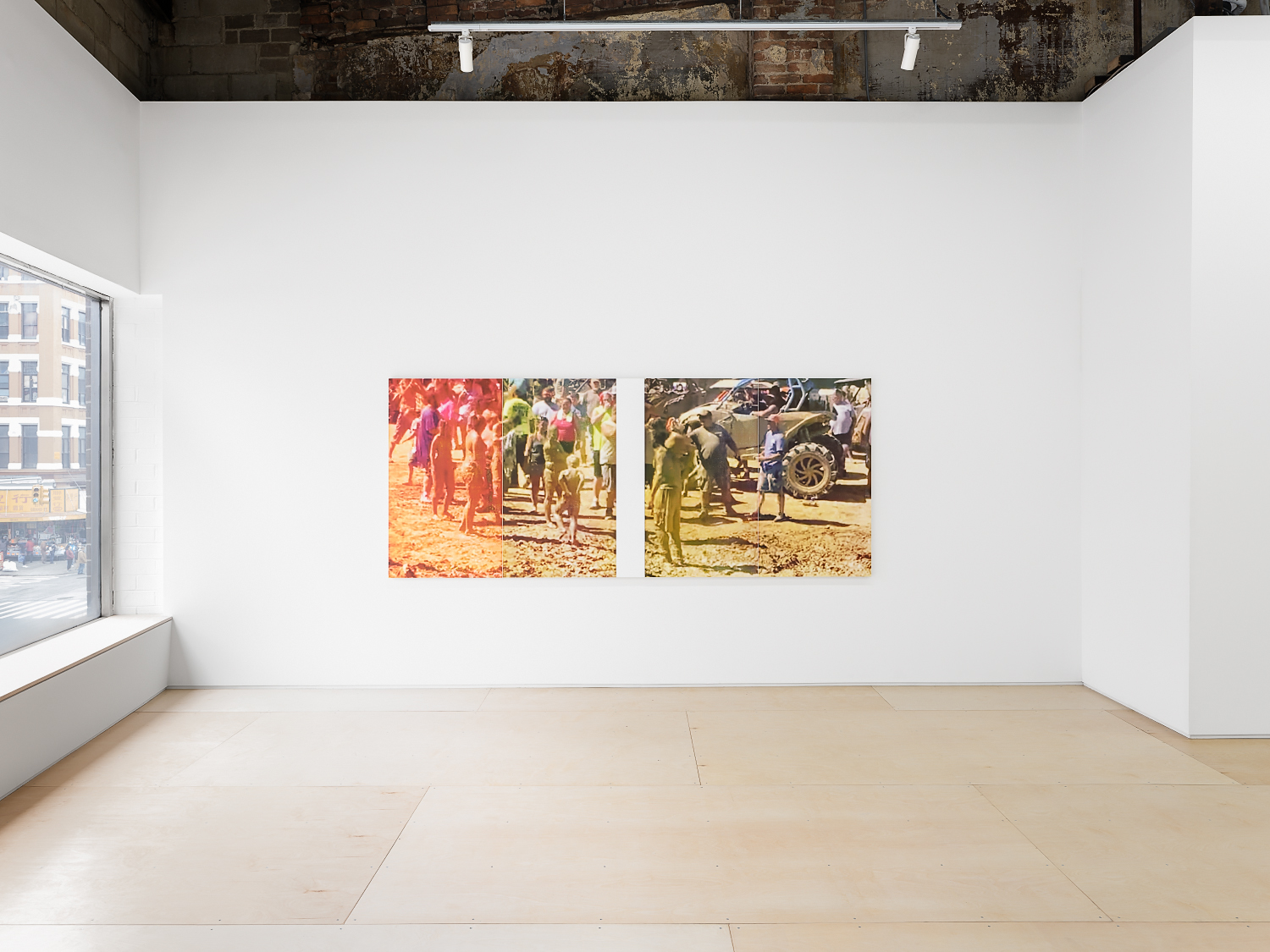
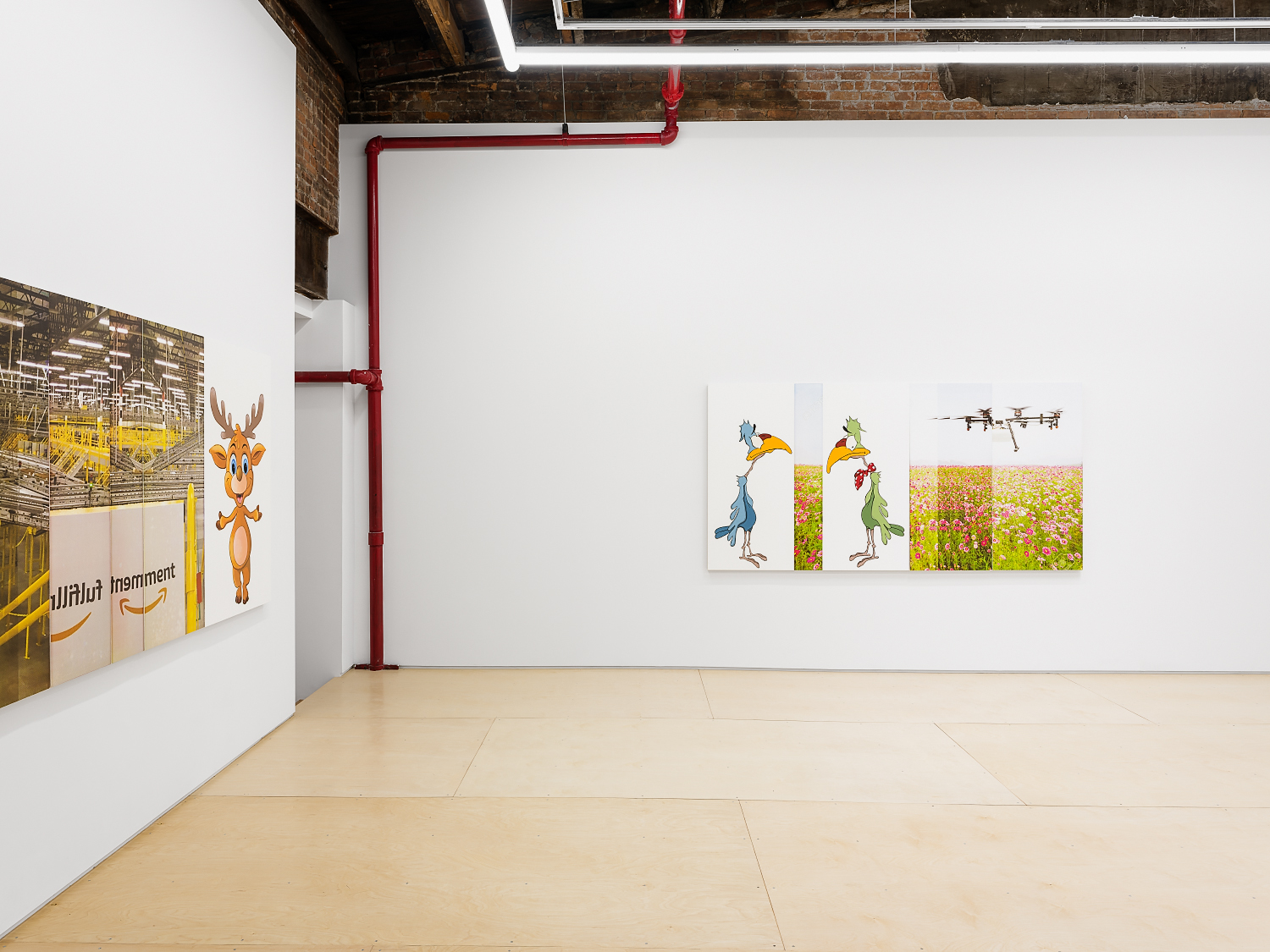
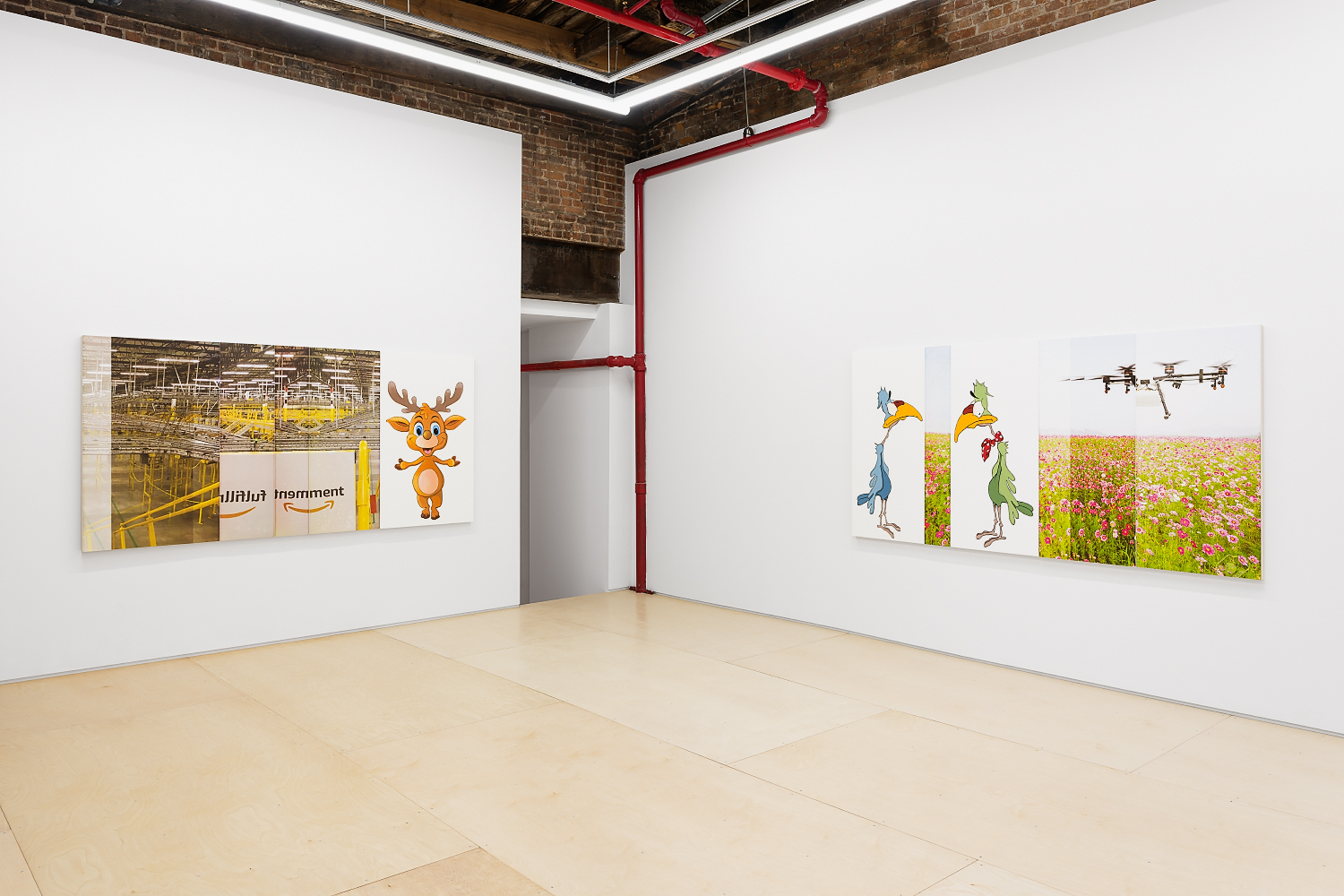
14 Apr–4 Jun 2022
Fulfillment
Julia Wachtel
Helena Anrather is proud to present Fulfillment, an exhibition of six new large-scale paintings by Julia Wachtel, and her first solo show at the gallery.
A pioneer of appropriation within painting and an erudite critic of America’s unique brand of media machinations since the 1980s, Wachtel’s new body of work finds the artist pulling back to focus on the broader landscape, both literal and cultural, against which her earlier investigations of the spectacle’s viral moments and iconic subjects reside. Through a combination of silkscreen printing and oil paint, the artist continues her singular method of scanning contemporary culture, presenting her findings in a series of compositions interrupted by vertical breaks that resemble the movement of a page as it’s recorded against a scanner bed, stripes caused from printer heads being out of alignment, or glitches running across a corrupted digital file. Often juxtaposing high and low, right and left, clean and dirty, Wachtel displaces her imagery and allows their resulting ambiguity to facilitate her viewers in unlearning received conceptions of power and intent.
In the titular painting, Wachtel has silkscreened a fragmented and repeated photograph of an Amazon Fulfillment Center to create an infrastructure of scaffolded conveyor belts and hellish fluorescent overhead lighting that recedes as far as the camera’s eye can see. The warehouse of America’s second-largest private employer is curiously devoid of its non-unionized and overworked laborers, and no packages are in sight. The company’s swooping logo, over which sits slices of the word “fulfillment,” is mirrored to create an innocuous smiley face and a mishmash of letters that comes close to spelling “tenement” instead. Alongside this physical manifestation of the largely invisible networks of Neo-liberal capitalism to which we all pay rent, is an unsettlingly cheery blue-eyed reindeer levitating against a flat white background.
In Hello (all works 2021), a commercial drone hovers over a field of silkscreened poppies and two cartoon vultures, again painted, who look up and out toward the viewer, perhaps too strung out to fly. The raw material from which heroin is derived, a symbol of remembrance and mortality, and Warhol’s archetypal flower, the poppy is perhaps a quiet warning in Wachtel’s hands against our following in Dorothy’s footsteps, a plea for the either opioid or Instagram-addicted sheeple to wake up before it’s too late. In Duck, the cast of Duck Dynasty follows a certain self-assured Donald in their canoe, guns in hand. As if conjuring the place of their destined arrival, figures populate Wachtel’s canvas in Split, which depicts the self-titled annual Redneck Rave that in 2021 descended into “throat slashing and impalement,” according to a quick Google search. Despite its crowded composition, like the other works in this exhibition there is a certain emptiness to the scene, and the split that runs through the canvas is evocative of the abysm at the center of Gustave Courbet’s A Burial at Ornans (1849-50). Wachtel’s works similarly raises those dispossessed of the right to history to the level of the history painting, raising unanswered questions in the light of our recent unpresidential president, as well as the complex intersections of whiteness and class depicted, as to whether our understanding of what power looks like can be so easily discerned.
In Lorem Ipsum, Wachtel silkscreens a CGI representation of the world, encircled in a ring with the words “BREAKING / NEWS / LIVE” inscribed upon it. On the day Russia invaded Ukraine, CNN ungracefully cut to commercials against its coverage of the catastrophe, and Zac Brown Band’s song “Chicken Fried” played as viewers were escorted into an Applebee’s, the feed still captioned with the headlines of war. This anchor room world Wachtel conjures is one created only to turn, ceaselessly; its text fields filled with heartbreaks told in unwavering caps lock enthusiasm. I think of a phrase from Wachtel’s contemporary Gretchen Bender, “equivalent flow,” by which she meant the way television collapses politics and entertainment, making the distinction indiscernible. Through montage, Wachtel creates an impossible horizon that contains irreconcilable complexities, with her cartoon in this canvas saying what we are all left thinking, Yuck, kill yourself, but also hahaha. On the day Russia invaded Ukraine, a poet on Instagram shared a screenshot of Ilya Kaminsky’s poem “We Lived Happily During the War.” Kaminsky wrote, as if in sympathy of Wachtel’s cartoon, “And when they bombed other people’s houses, we / protested / but not enough, we opposed them but not / enough. I was / in my bed, around my bed America / was falling: invisible house by invisible house by invisible house. / I took a chair and watched the sun.” Wachtel paints our media spectacle of a sun, and with no clarity if we or it are at the center, she paints the self-directed schadenfreude that occurs when viewing our predicament from the outside in.
— Kenta Murakami